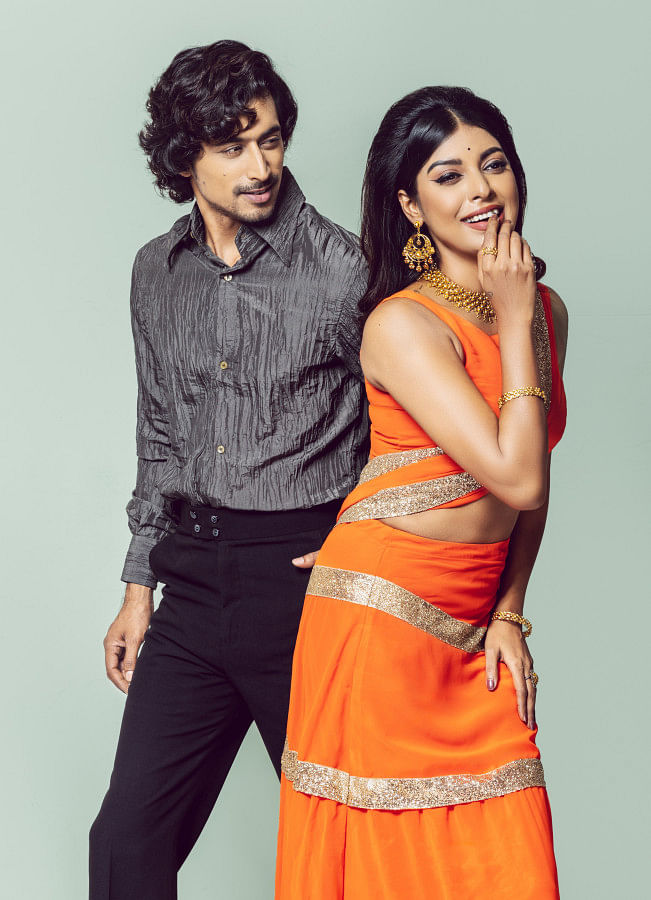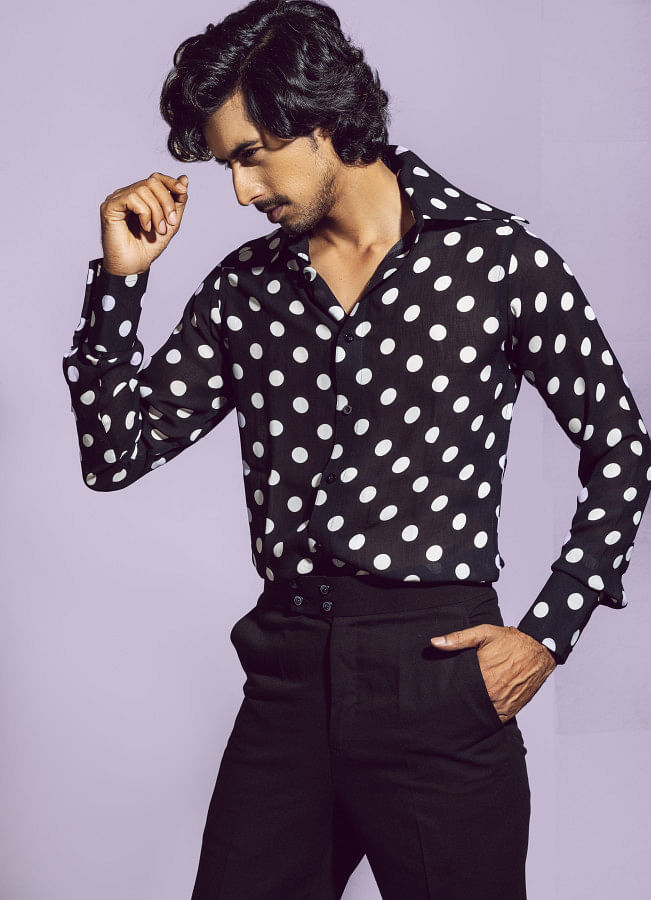The fashion of the 1960s and 1970s was a multicoloured tapestry of rebellion mixed with innovative styling. The zeitgeist of freedom and expression found voice among the psychedelic prints and swirling hues of tie-dye. Every piece of clothing, from the bohemian appeal of flowing maxi dresses to the mod miniskirts that dared to flout convention, spoke volumes about an age in transition.
Fashion, adorned with fringes, beads and bell-bottoms, evolved into a statement advocating for both social reform and individuality. The limits of convention moved with the hemlines, opening the way for an unprecedented period of artistic expression.
Photo: Shahrear Kabir Heemel
The 1960s cultural movement — ‘Youthquake,’ a term coined by Vogue magazine’s editor-in-chief Diana Vreeland in 1965 — involved music and pop culture; the Women’s Liberation Movement, which challenged traditional gender roles by popularising unisex styles, pantsuits, mini-skirts, and other clothing that allowed women greater freedom of movement and expression, and the Anti-War Movement promoting fashion as a means of expressing dissent and countercultural ideals.
Jeans, tie-dye, military-inspired clothing, and protest symbols became popular elements in fashion, reflecting a rejection of mainstream values and a desire for social change. Additionally, the design philosophy that catered only to senior and elite members was undermined as the importance of catering to the teenage and young adult market grew.
Avant-garde fashion trends, such as the androgynous, tiny girl looks for women, overthrew the sophisticated jumper girls of the 1960s. While these movements were closely related to Western society, the fashion trends the movements gave birth to spread all over the world including Southeast Asia.
Photo: Shahrear Kabir Heemel
The 1960s saw the rise to fame of both tasteful designs reminiscent of the 1950s and fairly daring and controversial designs from the younger generation all around the world.
For the first time, a wide range of diverse trends were included in fashion, which focused on the youth market. Although there is not one answer to how the polka dots, bell-bottom pants, tightly-tailored saris, and unbuttoned shirts gained so much popularity in Southeast Asia, the fashion trends of the 60s and 70s echoed social movements and newfound playfulness that resonated with the youth everywhere.
Southeast Asia witnessed an intriguing fusion of traditional attire and global trends in the 1960s and 1970s, indicating a vibrant cross-cultural interaction.
Men’s and women’s attire included vibrant batik patterns combining traditional artistry with modern flair. Western-inspired styles were more prevalent during this time, and traditional clothing was paired with the growing popularity of bell-bottom pants and miniskirts.
Photo: Shahrear Kabir Heemel
Southeast Asia’s 1960s and 1970s fashion, which celebrated individuality against a backdrop of societal change, embodied a combination of tradition and modernity as a region with varied cultures and influences.
Bright colours and striking patterns emphasised individualism in 1970s fashion, which is undoubtedly making a resurgence due to its wonderful, flirtatious, and dynamic style.
For women, their attire reflected greater authority coinciding with the global movements and influences from Bollywood. Sarees in the 1970s became bolder, sharper, and fiercer with vibrant colours and patterns, and particularly tight-draped chiffon sarees were the dominating trend.
As androgynous clothes became more and more fashionable, women’s rights and feminism were evident in their wardrobe choices.
The history of fashion will tell you that trends make a comeback. Just as certain Y2K fashion trends have made a comeback, so did the polka dots and vibrant colours from the ’60s, ’70s and the 80’s.
Photo: Shahrear Kabir Heemel
To start with, bell-bottom pants, flare and skinny pants are gaining popularity. Bold patterns like polka dots and tie-dye, fitted skirts, and tightly draped sarees are on the rise again. Even if the hairstyles and thick winged eyeliner might be a revival we are not ready for yet, these iconic trends serve as inspiration for creating a modern yet nostalgic look today.
Be it for themed parties or for vamping up your everyday look, the trends of the sixties and seventies have timeless potential for adaptation.
The vivid blend of tradition and modernity is being celebrated by the resurgence of 1960s and 1970s fashion trends throughout South Asia. This revival respects cultural tradition while embracing modern sensibilities and vibrant colours, elaborate patterns, and classic silhouettes. It represents a return to style, weaving together the past and present into a cohesive fashion statement.
Model: Fazla Rabbi Khan, Arnira
Styling: Sonia Yeasmin Isha
Mua: Sumon Rahat
Wardrobe: BSOAB
Jewellery: Zevar by Faisal



